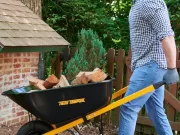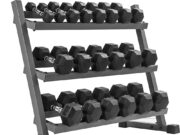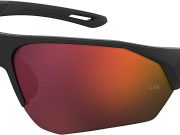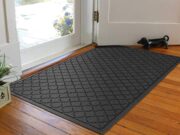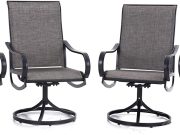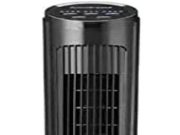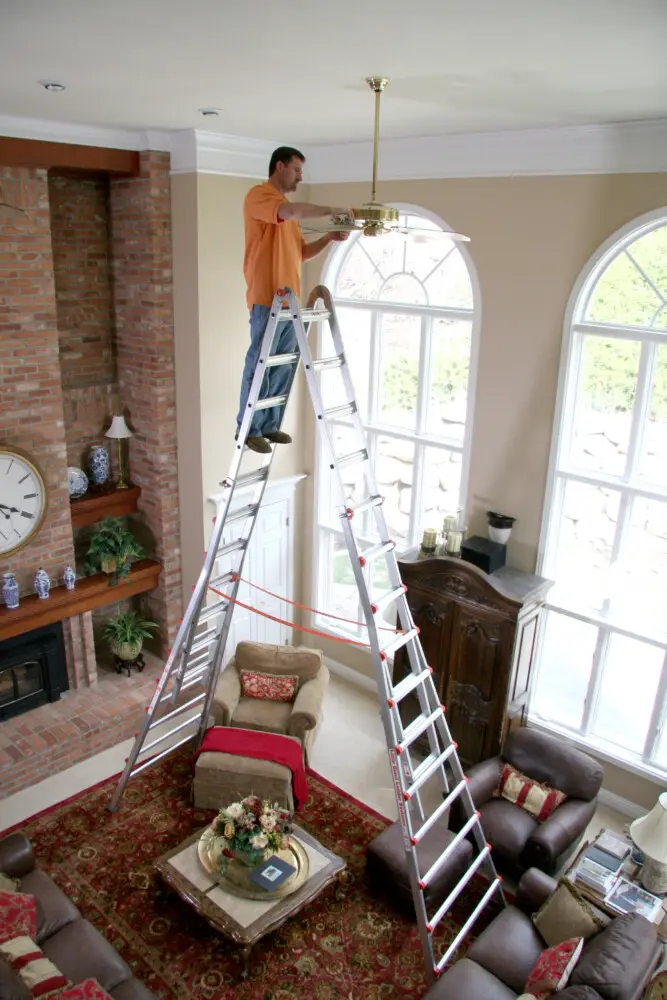If your home or place of business has a high ceiling, you are aware of how difficult it may be to clean, paint, or put fixtures on it. To do the task, you need a ladder that is strong, secure, and tall enough. But how do you pick the best ladder for your needs when there are so many options on the market?
This post will cover some of the top high ceiling ladders available for online purchase. We’ll also offer some pointers on how to use them wisely and successfully. We have the ladders you need, whether you need them occasionally or frequently.
What to Look for in a Ladder for High Ceiling?
Let’s look at some of the things you should think about when choosing a ladder for high ceilings before we get into the reviews. These consist of:
1. Height:
The ladder’s height is the most crucial aspect to take into account. You need a ladder that is the right length—not too short, nor too long—to reach the height you need. While a ladder that is too long will be challenging to move and store, a ladder that is too short will force you to stretch or lean dangerously. The ideal ladder would include many extendable or retractable pieces, or a height that can be adjusted.
2. Weight capability:
Another important aspect to take into account is the ladder’s weight capability. You need a ladder that can hold both your weight and the weight of any equipment or supplies you might be carrying. A flimsy ladder may bend, shatter, or collapse under your weight, seriously injuring you. The manufacturer should explicitly mention the weight capacity of the ladder, and it should be at least 25% greater than your own weight.
3. Stability:
The ladder’s stability is also crucial. A ladder that can stand stably on the ground and avoid swaying or toppling over is what you desire. Wide feet, non-slip bottoms, and locking mechanisms that stop the parts from sliding or collapsing are all necessary for a secure ladder. Additionally, you should steer clear of setting up the ladder on slick or uneven surfaces and always adhere to the manufacturer’s instructions for safe ladder setup and use.
4. Material:
The ladder’s construction material has an impact on both its performance and durability. A variety of materials, including wood, aluminium, fibreglass, and steel, can be used to make ladders. Each material has benefits and drawbacks of its own. For instance, wood ladders are affordable and simple to fix, but they weigh a lot and are vulnerable to rotting and cracking. Although aluminium ladders are lightweight and resistant to corrosion, they conduct electricity and might not be the best choice for electrical work. Although fibreglass ladders are sturdy and non-conductive, they are also costly and prone to cracking or fading over time. Although steel ladders are strong and long-lasting, they are also bulky and prone to rust.
5. Features include:
Another thing you want to consider is the ladder’s features. Some ladders have extra features that increase their convenience and adaptability. As an illustration, some ladders feature wheels that make them simple to move, while others have hooks or trays that let you keep your tools or supplies on the ladder. Step ladders, extension ladders, and scaffolding ladders are examples of ladders that contain hinges that enable them to fold into various configurations. To increase grip and comfort, some ladders contain rungs that are serrated or grooved.
The 5 Best Ladder for High Ceiling
Let’s look at some of the top choices on the market now that you know what to look for in a ladder for high ceilings. Based on factors including height, weight capacity, stability, material, features, customer feedback, and pricing, we’ve chosen five ladders. These are them:
1. Little Giant Multi-Use Velocity Ladder

One of the most useful and well-liked ladders on the market is the Little Giant Velocity Multi-Use Ladder. It can be utilised as a scaffolding system, extension ladder, stair ladder, 90-degree ladder, or step ladder. It can hold up to 300 pounds per side and adjusts in height from 4 to 22 feet.
A lightweight and strong aluminium alloy is used to create the Little Giant Velocity Multi-Use Ladder. Wide-flared legs and rubber non-slip feet give it stability and safety. Additionally, it has Rock Locks and dual-pin hinges that make it simple and safe to change the ladder’s height and shape.
The lifetime warranty and compliance with all ANSI and OSHA requirements are both features of the Little Giant Velocity Multi-Use Ladder. It folds down to 5 feet 7 inches and weighs 39 pounds, making storage and transportation simple.
Pros:
- Versatile: Adaptable to a variety of settings
- Adjustable: has a maximum reach of 22 feet
- Wide-flared legs and rubber non-slip feet make this piece stable.
- Sturdy: built of aluminium alloy of aerospace-grade
- Secure: contains dual-pin hinges and Rock Locks
- Lifetime warranty – Complies with or beyond all ANSI and OSHA requirements
Cons:
- High cost
- Heavy
2. Louisville Ladder FE3228 Fibreglass Extension Ladder

For high ceiling electrical work, the Louisville Ladder FE3228 Fibreglass Extension Ladder is a fantastic option. It is made of corrosion- and weather-resistant fibreglass that is non-conductive. It can hold up to 300 pounds and adjusts in height from 16 to 28 feet.
The FE3228 Fibreglass Extension Ladder from Louisville Ladder offers D-shaped, serrated rungs for improved comfort and grip. On both hard and soft surfaces, it also has steel swivel safety shoes. The parts are fastened in place and prevented from slipping by quick-latch rung locks.
The FE3228 Fibreglass Extension Ladder from Louisville Ladder complies with and/or exceeds all OSHA and ANSI regulations. When folded, it is 60 pounds and 16 feet long.
Pros:
- Fibreglass construction: non-conductive
- Adjustable: has a maximum reach of 28 feet
- Grip: serrated D-shaped rungs.
- Stable: equipped with steel-toed safety shoes
- Has quick-latch rung locks for security.
- Meets or exceeds all ANSI and OSHA requirements.
Cons:
- Heavy
- bulky
3. Ohuhu Aluminium Telescoping Extension Ladder

The Ohuhu Aluminium Telescopic Extension Ladder is a small, lightweight ladder with a 12.5 foot maximum extension. It is lightweight and durable because it is composed of a high-quality aluminium alloy. It can hold 330 pounds in total.
Anti-slip end caps on the Ohuhu Aluminium Telescopic Extension Ladder keep it from sliding or scratching the floor. Additionally, it has locking pins at each step to guarantee security and stability. It contains thumb controls that make it simple and easy to retract the ladder.
For simple travel and storage, the Ohuhu Aluminium Telescopic Extension Ladder comes with a carrying strap and a storage bag. When collapsed, it is only 25 pounds and 40 inches long.
Pros:
- Compact: retractable to a length of 40 inches
- Transportable: includes a storage bag and a carrying strap.
- Compact: barely weighs 25 pounds.
- Robust: constructed of a high-quality aluminium alloy
- Anti-slip: both ends have end caps.
- Stable: each step has locking pins
- Smooth: each step includes thumb buttons for simple retraction
Cons:
- Limited in length, only extending to 12.5 feet
- No warranty
4. WolfWise Aluminium Telescoping Ladder

For work on high ceilings, another lightweight and portable solution is the WolfWise Aluminium Telescoping Ladder. It can support up to 330 pounds and extend up to 15.5 feet in length.
The high-quality aluminium alloy used to create the WolfWise Aluminium Telescoping Ladder gives it durability and corrosion resistance. It has non-slip end caps that are stable and scratch-resistant for the floor. Additionally, it has double couplings on each rung to keep your fingers from getting pinched when retracting.
You may simply and safely alter the height using the one-button retraction system on the WolfWise Aluminium Telescoping Ladder. It has a sturdy strap that makes carrying and storing it simple.
Pros:
- Compact: retractable to a length of 36 inches
- With a heavy-duty strap, it is portable
- High-quality Aluminium alloy is used to make it durable.
- Protected from corrosion with a black powder coating
- Easy: One-button retraction system
- Non-slip: End caps at both ends
- Safe: Double couplings on every rung
Cons:
- Limited in length, only extending to 15.5 feet
- No warranty
5. Cosco World’s Greatest Multi-Purpose Ladder

For work with high ceilings, the Cosco World’s Greatest Multi-Purpose Ladder is another adaptable choice. It can be utilised as a scaffold system, wall ladder, extension ladder, or step ladder. It may be adjusted to a height of either 12 feet to 21 feet for an extension ladder or 6 feet to 18 feet for a step ladder. Up to 300 pounds can be supported on either side.
The industrial-grade aluminium alloy used to create the Cosco World’s Greatest Multi-Purpose Ladder gives it strength and durability. It includes feet that are slip-resistant and have flared legs to add stability. To secure the ladder’s components and shape, it also incorporates positive locking hinges and spring-loaded locks. It has rungs that are box-shaped and secure to stand on. The ANSI and OSHA standards are all met or exceeded by the Cosco World’s Greatest Multi-Purpose Ladder. When folded, it is 42 pounds and 5 feet 6 inches long.
Pros:
- Versatile: able can be arranged in four different ways
- Adjustable: has a maximum reach of 21 feet
- Stable: features feet that are slip-resistant and flared legs.
- Sturdy: constructed of aluminium alloy of industrial grade
- Safe: spring-loaded locks and positive locking hinges
- Convenient: rungs are formed like boxes
- Adheres to or surpasses all ANSI and OSHA requirements.
Cons:
- Heavy
- bulky
How to Safely Use a Ladder for a High Ceiling
When working on high ceilings, using a ladder can be risky if you don’t adhere to some basic safety precautions. Here are some pointers for properly using a ladder near a high ceiling:
- Select the appropriate ladder for the task. Make sure the ladder is sturdy, solid, and tall enough to meet your demands. Before using the ladder, review the specs and instructions provided by the manufacturer.
- Before using a ladder, check it out. Check the ladder for any flaws that could compromise its functionality or safety, such as cracks, dents, bends, or loose pieces. Do not use the ladder if you discover any flaws and notify the vendor or manufacturer right once.
- Set the ladder up correctly. Lay the ladder out on a dry, flat, stable surface. Never set up the ladder on a slick, wet, or squishy surface. Make sure the ladder is locked in position and fully extended. Use the 4-to-1 rule: Place the base of the ladder 1 foot away from the wall for every 4 feet of height. Make sure the ladder’s top rises at least three feet above the landing.
- Safely ascend the ladder. When ascending or descending a ladder, always face it. Grip the rails or rungs with both hands. Don’t bring any tools or supplies with you; utilise a tool belt or a pail hung on a rope as a substitute. Never skip any steps or rungs. Keep your body centred between the rails and avoid overextending or leaning to one side. On the ladder’s top three steps or rungs, do not stand.
Work safely while atop the ladder. Dress appropriately and put on slip-resistant, comfy footwear. If necessary, put on safety equipment such gloves, goggles, and a helmet. On windy or stormy days, avoid working. The ladder should not be used close to power lines or other electrical sources. Don’t let kids play with the ladder or leave it alone.
Frequently Asked Questions
1. How can I determine the right size ladder for my high ceiling?
Your ceiling height and your reach height both play a role in determining the size of ladder you require. Add your height to the length of your arms, then deduct 4 feet to find the height of your reach. For instance, your reach would be 6 + 2 – 4 = 4 feet if you were 6 feet tall and had an arm length of 2 feet.
Measure from the floor to the desired location for your ceiling work in order to determine the height of your ceiling. Your ceiling height is 16 feet, for instance, if you want to paint a spot that is 16 feet above the ground.
Add your reach to the height of your ceiling, then divide by four to get the size of ladder you need. You need a ladder that is (4 + 16) / 4 = 5 feet long, for instance, if your reach is 4 feet and your ceiling height is 16 feet.
2. What distinguishes a step ladder from an extension ladder?
A step ladder has two pieces that are hinged together at the top and is self-supporting. Step ladders don’t need to lean on a wall or other support because they can be utilised on flat surfaces.
A non-self-supporting ladder with two or more extendable or retractable parts is called an extension ladder. A wall or other support must be leaned against using an extension ladder at an angle of roughly 75 degrees.
3. What distinguishes an aluminium ladder from a fibreglass ladder?
A fibreglass ladder is a non-conductive, fiberglass-reinforced plastic ladder. Since fibreglass doesn’t conduct electricity, it can be used for electrical work.
A conductive ladder built of aluminium alloy is known as an aluminium ladder. Although an aluminium ladder is portable and resistant to corrosion, it shouldn’t be used close to electrical sources because it can conduct electricity.
4. How should my ladder be stored properly?
You should follow these instructions to properly store your ladder:
- After each usage, clean your ladder. Use a moist cloth to remove any paint, grease, dirt, or dust.
- Thoroughly dry your ladder before putting it away. In order to prevent damage or deterioration, keep your ladder out of dampness and excessive temperatures.
- Reduce the size of your ladder as much as you can.
- Keep your ladder out of direct sunlight in an area that is cool, dry, and well-ventilated.
- Ladders should be hung horizontally on hooks or supports that distribute their weight equally.
- Never rest anything against your ladder or store it on top of it since it could get damaged.
The Bottom-line
Working on a high ceiling can be difficult, but with the correct ladder, you can make it safer and easier. Based on their height, weight capacity, stability, material, features, user feedback, and price, we reviewed some of the top ladders for high ceilings that you can purchase online. Additionally, we have offered some advice on how to use them wisely and successfully.
We sincerely hope that this information was helpful in your search for the ideal ladder.
Please feel free to post any questions or comments on ladders for high ceilings in the section below.
I appreciate you reading.


